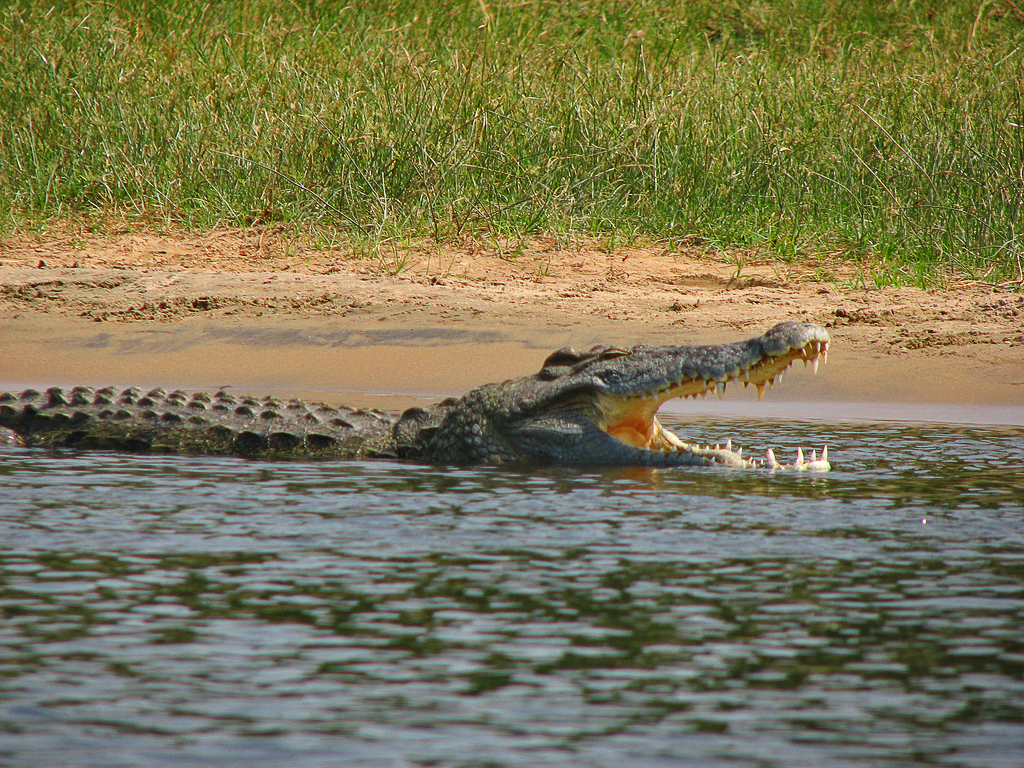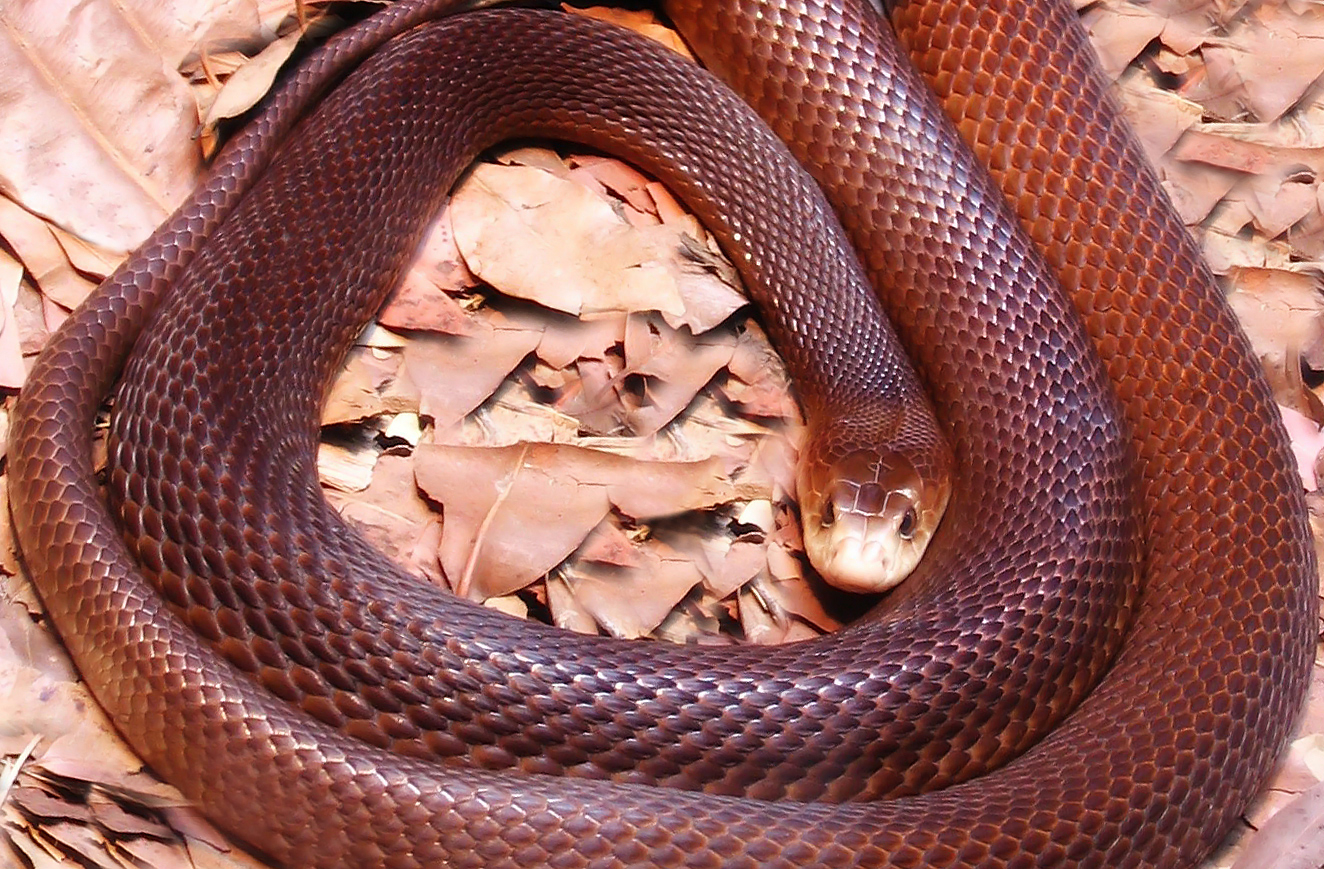Translations:AY Honors/Harmful Animals/Answer Key/52/en
Gila monster (Heloderma suspectum)
Description: A heavy, slow-moving lizard, up to 60 cm (2.0 ft) long, the Gila monster is the only venomous lizard native to the United States and one of only two known species of venomous lizards in North America, the other being its close relative, the Mexican beaded lizard (H. horridum).
Habitat: Southwestern United States and northwestern Mexican state of Sonora.
Type of sexual reproduction: The male initiates courtship by flicking his tongue to search for the female's scent. If the female rejects his advances, she will bite him and crawl away. When successful, copulation has been observed to last from 15 minutes to as long as two and a half hours. The female lays eggs in July or August, burying them in sand 5 in (13 cm) below the surface. The clutch consists of two to 12 eggs: five is the average. The incubation lasts nine months, as the hatchlings emerge during April through June the following year.
Eating habits: The Gila monster feeds on small birds, mammals, frogs, lizards, insects, and eggs - primarily on bird and reptile eggs. It eats infrequently (only five to ten times a year in the wild), but when it does feed, it may eat up to one-third of its body mass. Its sense of smell is so keen, it can locate and dig up chicken eggs buried 15 cm (6 in) deep and accurately follow a trail made by rolling an egg. Prey may be crushed to death if large or eaten alive if small, swallowed head-first, and helped down by muscular contractions and neck flexing. Unusually, after food has been swallowed, the Gila monster immediately resumes tongue flicking and search behavior, probably as a result of a history of finding clumped prey such as eggs and young in nests. Gila monsters are able to climb trees and cacti in search of eggs.
Diseases and harm to humans: While poisonous, there are no reports of death from bites after the 1930's and those deaths likely were related to poor medical care. If bitten, the victim may need to fully submerge the attacking lizard in water to break free from its bite. Symptoms of the bite include excruciating pain, edema, and weakness associated with a rapid drop in blood pressure. Expect to be sick for about 5 days. "I have never been called to attend a case of Gila monster bite, and I don't want to be. I think a man who is fool enough to get bitten by a Gila monster ought to die. The creature is so sluggish and slow of movement that the victim of its bite is compelled to help largely in order to get bitten. ” —Dr. Ward, Arizona Graphic, September 23, 1899 On the positive side, science is finding useful medicine from the Gila monster including a diabetes drug Byetta approved by the US FDA in 2005
Prevention: Don't bother the Gila monster and it will not bother you.
Nile Crocodile (Crocodylus niloticus)
Description: An apex predator, the Nile crocodile is the second largest reptile in the world. On average the Nile crocodile is between 4.1 metres (13 ft) to 5 metres (16 ft), weighing around 410 kg (900 lb). However, specimens measuring 6.1 metres (20 ft) in length and weighing 907 kg (2,000 lb) have been recorded. They have thick scaly skin that is heavily armored.
Habitat: The Nile crocodile is quite widespread throughout Sub-Saharan Africa, occurring mostly in the central, eastern, and southern regions of the continent and lives in different types of aquatic environments such as lakes, rivers and marshlands.
Type of sexual reproduction: Nile crocodiles lay eggs to reproduce, which are guarded by the female. The hatchlings are also protected for a period of time, but hunt by themselves and are not fed by the parents.
Eating habits: Adults are apex predators and prey upon various birds, reptiles and mammals. This includes ostrich and pythons, antelopes, gazelles, waterbuck, bushbuck, impala, sitatunga, lechwe, eland, kudu, gemsbok, sable antelope and wildebeest zebras, warthogs and baboons. When crocodiles grow they prefer larger prey for energy efficiency. Therefore large adults rarely tackle small prey. Large adults sometimes take on larger prey such as giraffe, Cape buffalo, young hippos, and young elephants and even black rhinoceros and hippopotamus. Even other predators like hyenas, cheetah, African wild dogs, jackals, leopards, and lions have been killed by crocs.
Diseases and harm to humans: Given their preference for large mammals, it is not surprising that hundreds of people and large numbers of livestock are lost each year to attacks. They usually catch prey that comes to the water to drink, but can also hunt on land, lying in ambush near forest trails or roadsides, up to 50 m (170 feet) from the water's edge. The species is hunted and farmed for its skin used for leather.
Prevention: Awareness of surroundings and caution is the only real prevention.
Coastal taipan (Oxyuranus scutellatus)
Description: Coastal taipans are the largest venomous snake in Australia. Adult specimens of this species typically attains sexual maturity around 1.2 m (3.9 ft) in total length (body + tail). More mature specimens can grow to between 1.5 and 2.0 m (4.9 and 6.6 ft).
Habitat: Coastal taipans can be found in a variety of different habitats. They can be found in warm, wetter temperate to tropical coastal regions, in monsoon forests, wet and dry sclerophyll forests and woodlands, and in natural and artificial grassy areas, including grazing paddocks, and disused rubbish tips. The coastal taipan snake, despite its name, does live in habitats hundreds of kilometres away from the nearest beach. The can be found in northern and eastern Australia and the southern portion of the island of New Guinea.
Type of sexual reproduction: Courtship observed in captive Coastal Taipans appears to follow the basic pattern seen in many other snake species. Upon encountering a receptive female the male becomes highly excited and moves up and along the body of the female, continually tongue-flicking and rubbing his chin against her. In captivity, copulation has lasted as long as three hours and 20 minutes. Two to three months after mating the female will lay between 3 and 21 soft-shelled eggs (average of 11), usually in a log hollow, under tree roots or in cavities in the ground. In captivity females often produce a second clutch many weeks after the initial mating – this suggests the female may be able to store sperm for several months.
Eating habits: Rats, mice, bandicoots, and various species of birds make up their entire diet. Once prey is detected, the snake ‘freezes’ before hurling itself forward and issuing several quick bites. The prey is released and allowed to stagger away. This strategy minimises the snake’s chance of being harmed in retaliation, particularly by rats, which can inflict lethal damage with their long incisors and claws
Diseases and harm to humans: Its venom contains primarily taicatoxin, a highly potent neurotoxin known to cause blood clotting reactions. Without treatment expect to die within 90 minutes, and as little as 30 minutes for a severe bite. Every bite delivers a fatal dose of venom, so untreated bites have a mortality rate of 100%. They prefer to leave rather than fight, but if cornered they will strike repeatedly and can jump far off the ground.
Prevention: Avoid disturbing the snake, and if bitten, seek medical attention immediately. An antivenom was introduced in 1956, but before that fatalities were 100%.


